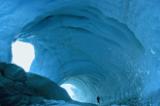Climate Change and Conservation
By Greg Czarnecki
Our climate is changing, faster than anyone expected. Predictions vary, but models using realistic assumptions about future greenhouse gas emissions point to a rise of 3.5o Celcius (6.3o Fahrenheit) in the next 50 years. Such a change would dramatically change our species and their distribution across North America.
While the impact will vary, most places will see a trend toward higher temperatures and more sporadic but intense bouts of precipitation. Minnesota, for example, is forecast to have a climate similar to Kansas if current trends continue.
While that may sound appealing, it signals momentous changes for our native species and habitats. We’re already seeing plants bloom earlier and birds begin their migration sooner. Wildfires are becoming more frequent and severe, and Alaska’s arctic permafrost is melting at an unprecedented rate. And invasive species like kudzu and the gypsy moth will be spreading further into ecosystems already stressed by the effects of climate change.
How will this affect our native species?
Every species requires certain conditions in order to survive and reproduce. These tolerance ranges -- which include everything from light and temperature to nutrients and water, -- vary widely from species to species.
Some widespread species like starlings and many invasive plants tolerate equally wide-ranging conditions. Others have relatively narrow tolerance ranges and are only found in very specific habitats, such as polar bears and carnivorous plants. Climate change is going to have the greatest impact on species with narrow tolerance ranges and specific habitat requirements.
And impairing or imperiling one of the keystone species in an ecosystem potentially puts the rest at risk. Pennsylvania’s state tree, the hemlock, has been declining because of an invasive insect, the hemlock wooly adelgid. Up until now the hemlock-lined ravines of the northern part of the state have been spared because the adelgid can’t survive cold temperatures. But if predictions hold true, that will no longer be the case. Once the hemlocks die, the cold water streams flowing through the ravines will begin to warm, and the cold-water dependent brook trout, Pennsylvania’s only native trout and the state fish, is likely to be lost too.
Will our native species survive?
Some will and some won’t. Unfortunately, it seems inevitable that we’re going to lose some species. While predictions vary, it is possible that we could lose as many as one in four species by 2050.
But most species will be able to survive climate change. As habitats shift to the north and to higher elevations, plants and animals will move along with them. As long as a species is somewhat mobile, has a place to go, and a route to get there, moving is a viable response to climate change. This strategy even works for plants through the process of seed dispersal.
What role does land conservation play?
Two essential components must be in place for emigration to be successful – a destination and a path to get there. This is where land conservation will play a pivotal role.
Conservation organizations, government agencies, and land trusts must begin identifying and protecting large, relatively undisturbed tracts of land that can serve as home for the many species that will be making the trek north and to higher elevations. Without these refuges, many of our plants and animals will be marching into oblivion.
But those refuges will not be enough. We also need to identify and conserve habitat corridors through which these species can pass. This may be the most challenging part, because in addition to a changing climate they will also be running a gauntlet of habitat loss, urban sprawl, invasive species, and pollution.
All of this needs to happen soon. The amount of CO2 in the atmosphere today will ensure significant climate change for decades to come, regardless of how successful we are at reducing emissions. The collective power of our land trusts will be an essential part of helping our native biodiversity survive a changing climate.
Where can I learn more?
- The Nature Conservancy - Climate Change and Biodiversity
- Convention on Biological Diversity - Climate Change Adaptation Database
- Intergovernmental Panel on Climate Change - IPCC Fourth Assessment Report
- Defenders of Wildlife - Beyond Cutting Emissions: Protecting Wildlife and Ecosystems in a Warming World
Greg Czarnecki is the director of the Pennsylvania Natural Heritage Program and Executive Director of Pennsylvania's Wild Resource Conservation Program.
Go Straight to Your State
Learn about conservation and open space in your state.



